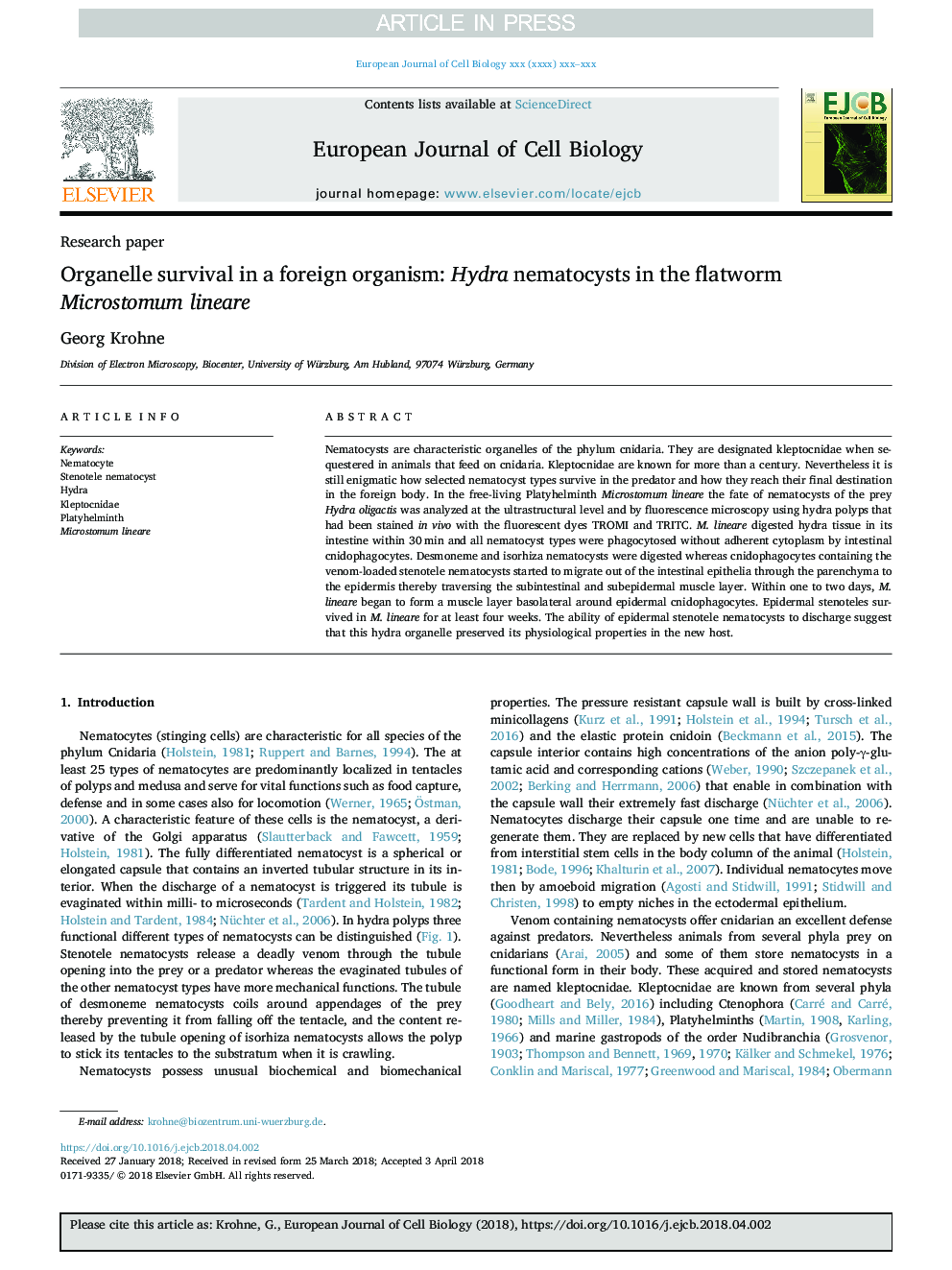| کد مقاله | کد نشریه | سال انتشار | مقاله انگلیسی | نسخه تمام متن |
|---|---|---|---|---|
| 8469620 | 1549654 | 2018 | 11 صفحه PDF | دانلود رایگان |
عنوان انگلیسی مقاله ISI
Organelle survival in a foreign organism: Hydra nematocysts in the flatworm Microstomum lineare
دانلود مقاله + سفارش ترجمه
دانلود مقاله ISI انگلیسی
رایگان برای ایرانیان
کلمات کلیدی
موضوعات مرتبط
علوم زیستی و بیوفناوری
علوم کشاورزی و بیولوژیک
دانش گیاه شناسی
پیش نمایش صفحه اول مقاله

چکیده انگلیسی
Nematocysts are characteristic organelles of the phylum cnidaria. They are designated kleptocnidae when sequestered in animals that feed on cnidaria. Kleptocnidae are known for more than a century. Nevertheless it is still enigmatic how selected nematocyst types survive in the predator and how they reach their final destination in the foreign body. In the free-living Platyhelminth Microstomum lineare the fate of nematocysts of the prey Hydra oligactis was analyzed at the ultrastructural level and by fluorescence microscopy using hydra polyps that had been stained in vivo with the fluorescent dyes TROMI and TRITC. M. lineare digested hydra tissue in its intestine within 30â¯min and all nematocyst types were phagocytosed without adherent cytoplasm by intestinal cnidophagocytes. Desmoneme and isorhiza nematocysts were digested whereas cnidophagocytes containing the venom-loaded stenotele nematocysts started to migrate out of the intestinal epithelia through the parenchyma to the epidermis thereby traversing the subintestinal and subepidermal muscle layer. Within one to two days, M. lineare began to form a muscle layer basolateral around epidermal cnidophagocytes. Epidermal stenoteles survived in M. lineare for at least four weeks. The ability of epidermal stenotele nematocysts to discharge suggest that this hydra organelle preserved its physiological properties in the new host.
ناشر
Database: Elsevier - ScienceDirect (ساینس دایرکت)
Journal: European Journal of Cell Biology - Volume 97, Issue 4, May 2018, Pages 289-299
Journal: European Journal of Cell Biology - Volume 97, Issue 4, May 2018, Pages 289-299
نویسندگان
Georg Krohne,